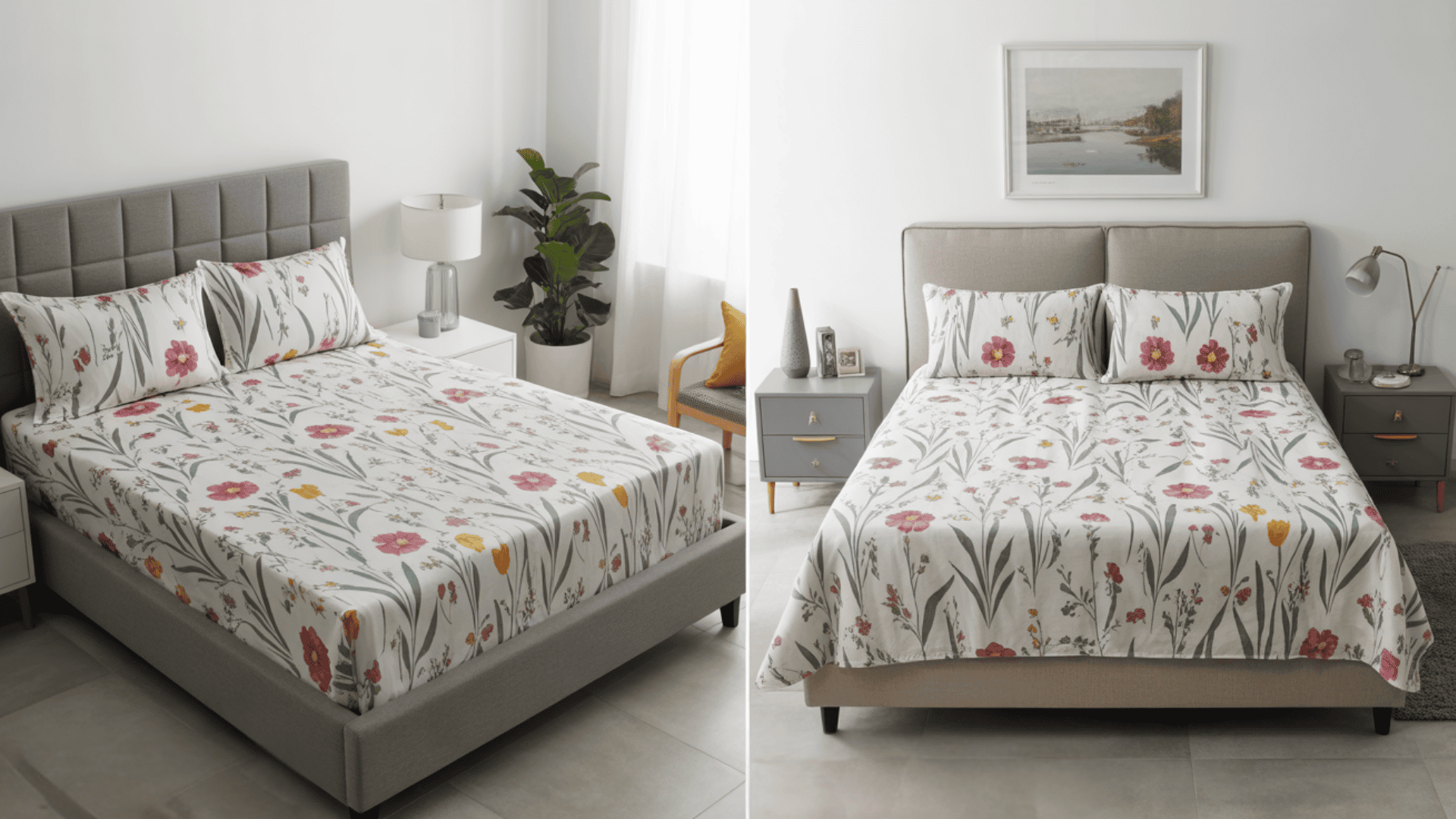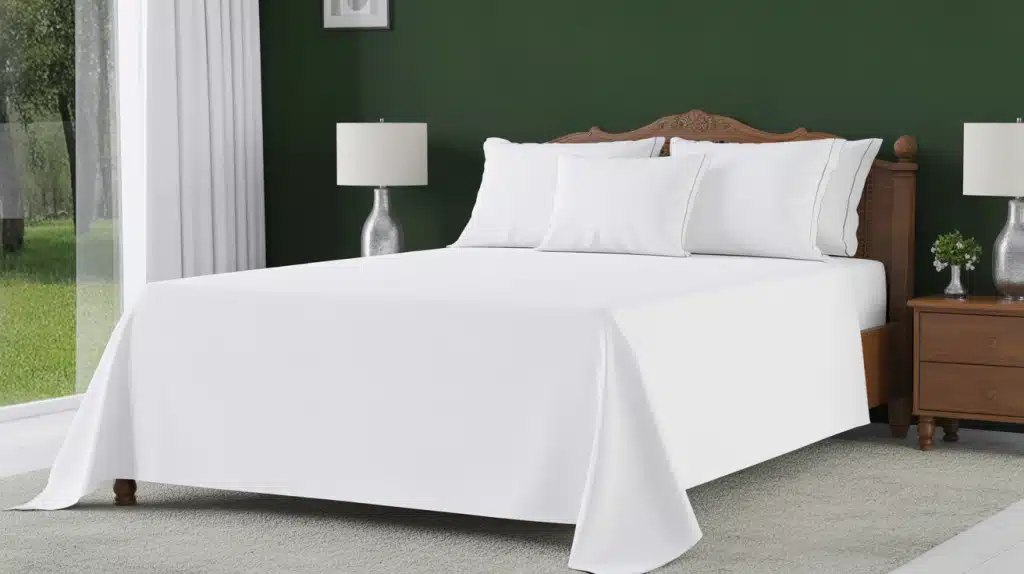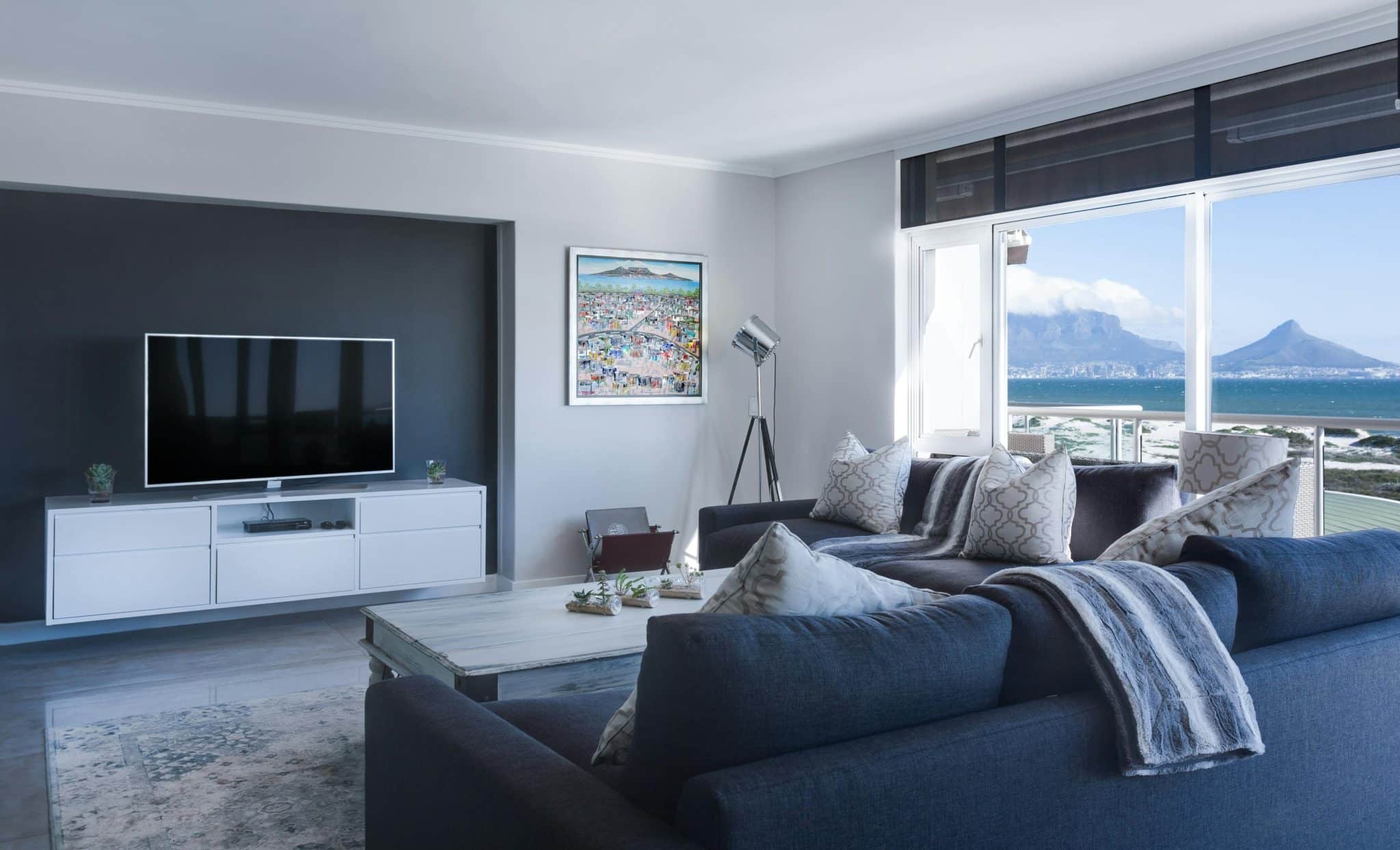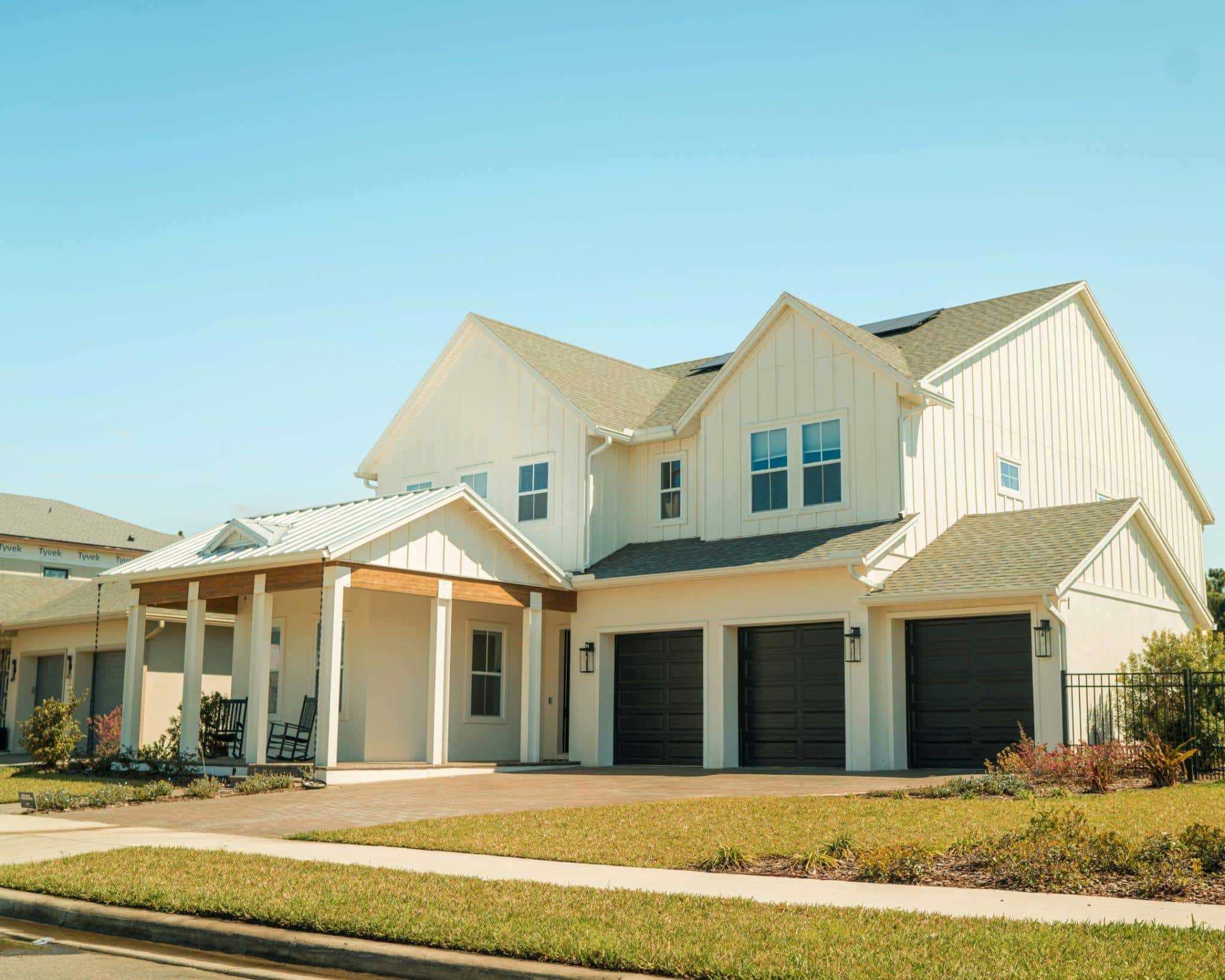Ever stood in the bedding aisle wondering which type of sheet to buy? You’re not alone.
Many people struggle with choosing between flat and fitted sheets, and the wrong choice can affect your sleep quality and daily routine.
The good news is that understanding the differences is simpler than you think. In this guide, we’ll break down everything you need to know about both sheet types, from their basic design to practical benefits.
By the end, you’ll know exactly which sheet fits your lifestyle, budget, and comfort needs.
Whether you’re a college student setting up your first dorm or a homeowner upgrading your master bedroom, this comparison will help you make the right choice for better sleep.
What is a Flat Sheet?
A flat sheet is a simple rectangular piece of fabric that sits directly on top of your mattress or between you and your blanket.
Unlike fitted sheets, it has no elastic corners and lies completely flat across the bed surface. Most flat sheets come in popular materials like cotton, linen, or microfiber to match different comfort preferences.
When placed on your mattress, it creates a smooth, even layer that can be tucked under the mattress edges or left loose for easy adjustment during sleep.
Pros and Cons of Flat Sheets
| Pros of Flat Sheets | Cons of Flat Sheets |
|---|---|
| It can be used as a top sheet, light blanket, or even a temporary curtain. | It can easily come untucked during the night. |
| A simple rectangular design makes it easier to launder and fold. | Needs re-tucking to maintain a neat bed. |
| Doubles as a cover for lounging or as an extra layer in cold weather. | Doesn’t grip the mattress like fitted sheets do. |
| Provides an extra barrier between you and blankets for hygiene. | Needs ironing or careful folding to look crisp. |
What is a Fitted Sheet?
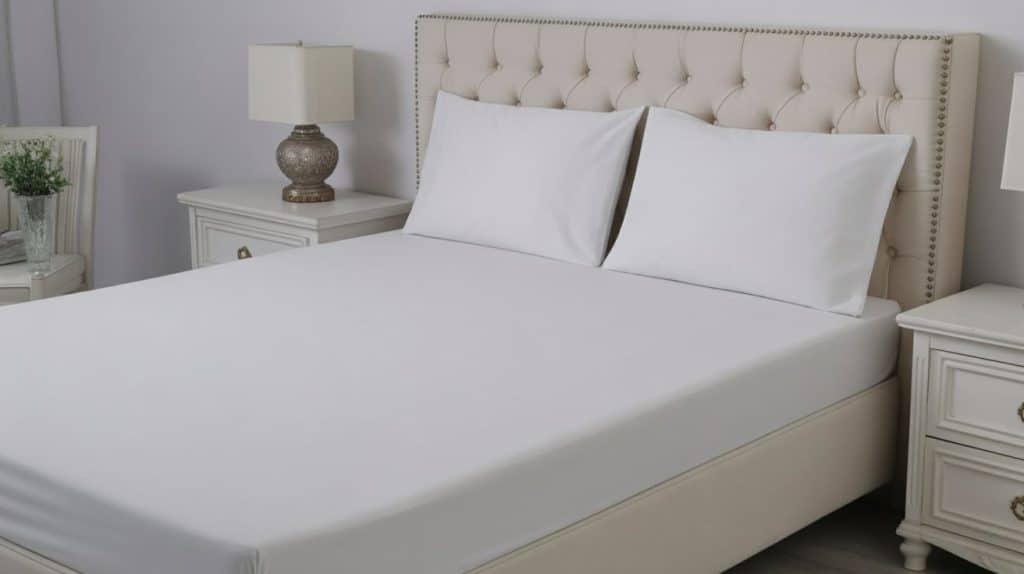
A fitted sheet is a specially designed bed sheet with elastic sewn into all four corners, allowing it to stretch and grip tightly around your mattress.
This sheet serves as a protective base layer that stays securely in place throughout the night, preventing slipping or bunching.
Common materials include cotton, bamboo, and jersey knit fabrics that offer stretch and breathability.
When properly fitted, it wraps snugly around the mattress corners and edges, creating a smooth, tailored appearance that looks neat and stays put even during restless sleep.
Pros and Cons of Fitted Sheets
| Pros of Fitted Sheets | Cons of Fitted Sheets |
|---|---|
| Elasticated edges grip the mattress securely. | Elastic corners make folding neatly more challenging. |
| Quick and easy to put on compared to flat sheets. | Over time, the elastic can stretch or lose tension. |
| Creates a smooth, tailored bed appearance. | Needs to match the mattress dimensions exactly. |
| Provides a snug barrier against dirt, sweat, and spills. | Elastic wear may require buying new sheets more often. |
Key Differences Between Flat and Fitted Sheets
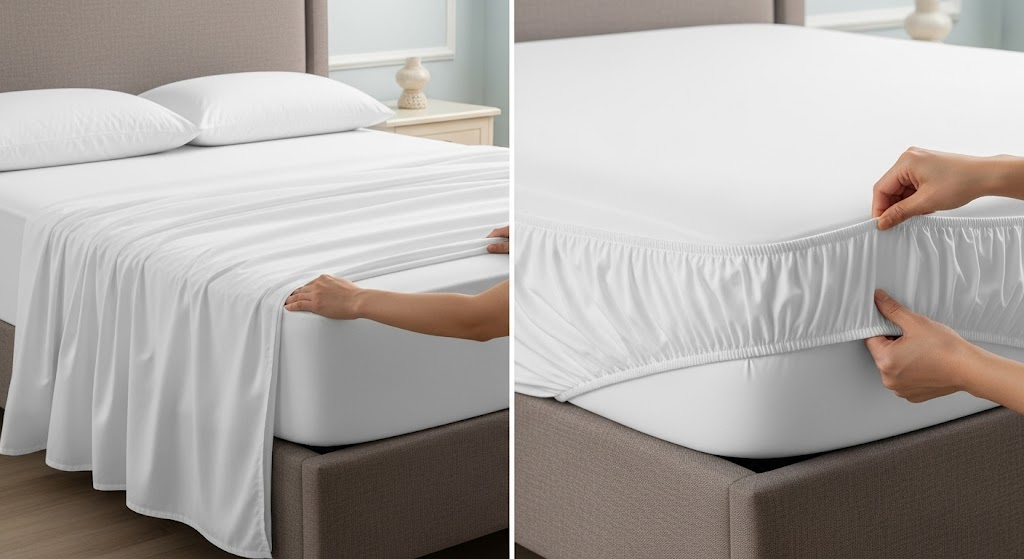
While both flat and fitted sheets are essential parts of bedding, they serve different purposes in terms of comfort, fit, and maintenance. Here are the key differences between them.
1. Shape & Structure
Flat sheets are simple rectangles with straight, hemmed edges and no stretch.
Fitted sheets feature elastic bands sewn into all four corners, allowing them to stretch and conform to mattress dimensions.
The elastic creates a pocket-like design that securely grips the mattress. This structural difference makes fitted sheets more form-fitting while flat sheets remain loose and flexible.
2. Functionality
Fitted sheets serve as the primary protective barrier between your body and the mattress surface. Flat sheets act as a comfort layer between you and heavier blankets or comforters.
Fitted sheets focus on mattress protection and staying in place during sleep. Flat sheets provide temperature control and can be adjusted easily for personal comfort.
3. Ease of Use
Putting on a flat sheet is straightforward – simply lay it over the bed and tuck the corners if desired.
Fitted sheets require more effort as you must stretch each corner over the mattress edges in sequence.
Removing flat sheets is quick and straightforward with just a pull. Fitted sheets need to be lifted and stretched off each corner, which can be tricky with thicker mattresses.
4. Bed Aesthetics
Flat sheets create a relaxed, casual look that can appear rumpled or loose throughout the day. Fitted sheets provide a clean, hotel-like appearance that stays neat even after sleeping.
The flat sheet’s loose drape gives beds a softer, lived-in feel. Fitted sheets maintain crisp lines and a polished look that many prefer for guest rooms.
5. Storage & Maintenance
Flat sheets fold into neat, rectangular shapes that stack easily in linen closets. Fitted sheets are notoriously difficult to fold due to their elastic corners, often resulting in bulky bundles.
Flat sheets resist wrinkles better when stored and require less ironing. Fitted sheets tend to hold creases from folding and may need more careful storage to prevent elastic wear.
Tips for Buying the Perfect Sheet
Finding the right sheet goes beyond just picking a color, fabric, size, and quality; all play a big role in comfort and durability. Here are some tips to help you choose the perfect one.
- Material Quality: Look for thread counts between 200-400 for the best balance of softness, durability, and breathability, while choosing weaves like percale for coolness or sateen for warmth.
- Size Guide: Always measure your mattress depth before buying – Twin (39″x75″), Full (54″x75″), Queen (60″x80″), King (76″x80″), or California King (72″x84″) to ensure proper fit.
- Care Instructions: Wash sheets in cool water with mild detergent, avoid bleach and fabric softeners, and store in a cool, dry place to maintain fabric integrity and color.
- Eco-Friendly & Hypoallergenic Options: Choose organic cotton, bamboo, or OEKO-TEX certified fabrics for chemical-free sleep, and consider tightly woven materials to reduce dust mite allergens.
Which One Should You Choose?
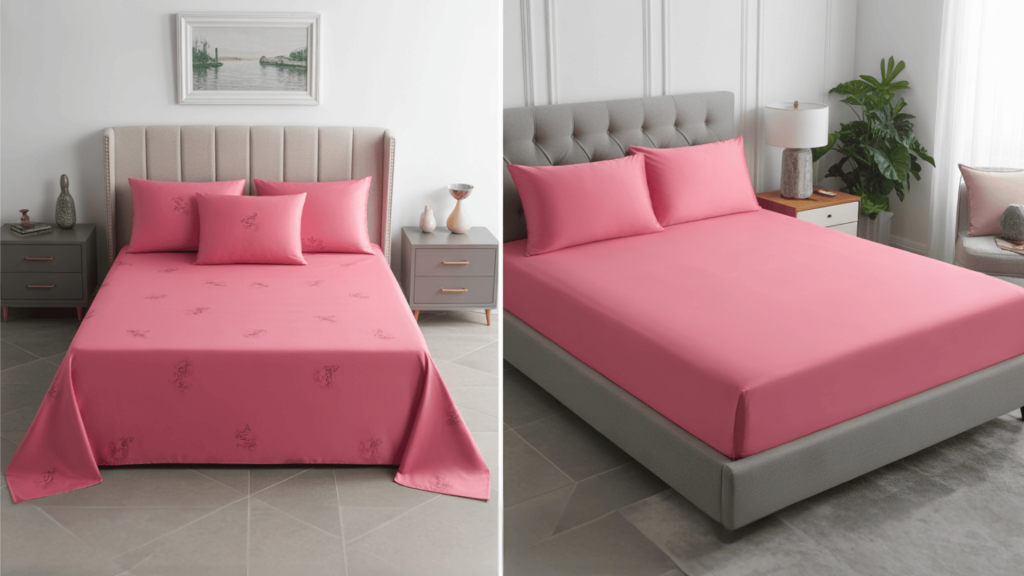
Your choice between flat and fitted sheets depends on your personal needs and preferences.
If you value convenience and a neat bed appearance, fitted sheets are ideal for busy lifestyles, while flat sheets work better for those who enjoy layering bedding for comfort.
Climate plays a role too; flat sheets offer better temperature control in warmer weather, whereas fitted sheets provide consistent coverage in cooler seasons.
For health and hygiene, fitted sheets create a better barrier against allergens and are easier to wash frequently, but flat sheets allow better air circulation for those with sensitive skin.
Your bedroom style also matters; fitted sheets give a clean, modern look while flat sheets create a relaxed, traditional feel that some prefer.
Many people wonder whether they should invest in cozy, high‑quality bedding. Exploring brands like Brooklinen and Quince can offer insight into how sheet materials and construction affect comfort and durability.
Summing It Up
Choosing between flat and fitted sheets doesn’t have to be complicated. Fitted sheets offer convenience and a neat appearance, staying securely in place throughout the night.
Flat sheets provide flexibility and better temperature control, perfect for those who like adjustable comfort layers. Consider your lifestyle, climate, and personal preferences when making your decision.
Busy professionals might prefer fitted sheets for their hassle-free maintenance, while those who enjoy traditional bedding rituals may favor flat sheets.
Remember, there’s no wrong choice, only what works best for you. What matters most is that you feel comfortable and get quality rest every night.
What type of sheet do you currently use, and are you happy with your choice? Share your experience in the comments below!
Frequently Asked Questions
Why Don’t People Use Flat Sheets Anymore?
Many people skip flat sheets because they prefer the convenience of fitted sheets and find layering with comforters or duvets simpler for busy lifestyles.
What Is the Point of a Flat Sheet?
Flat sheets create a hygienic barrier between your body and blankets, provide temperature control, and can be easily washed more frequently than heavy comforters.
Why Do Hotels Use Flat Sheets Instead of Fitted?
Hotels use flat sheets because they’re easier to launder in bulk, fold uniformly for storage, and create the crisp, professional look guests expect from quality accommodations.
Why Do Fitted Sheets Not Fit Anymore?
Fitted sheets may not fit properly due to elastic wear over time, incorrect sizing, or modern mattresses being thicker than older standard dimensions.
How Do Hotels Keep Their Sheets so Tight?
Hotels achieve tight sheets through professional laundering, proper sizing, hospital corners tucking technique, and regular replacement to maintain elasticity and crispness.

